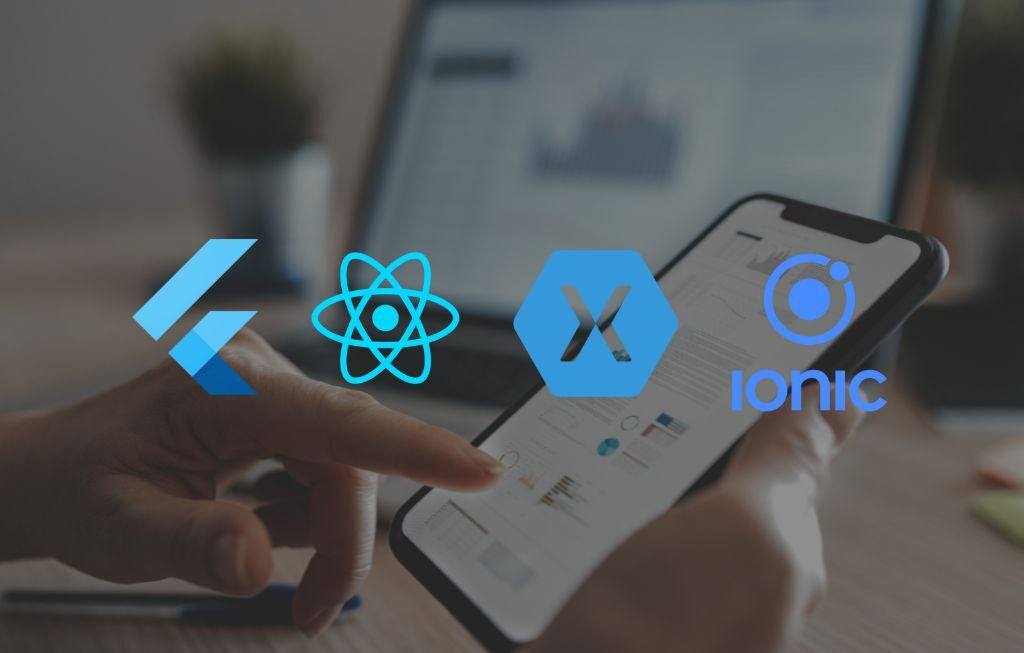API development, or Application Programming Interface development, has become a cornerstone in the field of software engineering, particularly with the emergence of mobile apps. APIs development tools provide easy connection across various software systems, resulting in increased functionality, decreased development time, and better user experiences.
This thorough tutorial delves into the realm of APIs, covering everything from fundamental terminology and tools to best practices and API development expenses.
Understanding the Basics: What is an API and its importance?
Imagine you’re in a restaurant. You, the consumer, are the application, while the kitchen is the server. The waiter is considered as an API in this scenario.
Just like a waiter takes your order to the kitchen and returns your meal, an API accepts client requests, connects with the server, and delivers the server’s response to the client. This seamless contact is what makes APIs so effective and necessary in modern software development.
It outlines how software components should interact so that diverse systems may successfully communicate and share data.
For instance, when you click the ‘Connect Facebook’ button on a mobile game, it uses an API to access your Facebook account without requiring you to enter your details again. This seamless interaction is made possible through API development, which eliminates the need to build similar functionalities from scratch.
They provide the foundation of current mobile apps, letting developers incorporate a variety of services and functionalities without reinventing the wheel. This not only saves time and money but also ensures that apps may make use of the characteristics of other platforms to deliver superior services. As a result, API development is a top priority for both app developers and corporate leaders looking to unlock new possibilities and efficiency.
Terminologies of API Development and its use
Understanding API development tools necessitates knowledge of many fundamental terminologies. Endpoints are precise URLs via which APIs access resources, whereas JSON (JavaScript Object Notation) is a lightweight data format used for communication. The HTTP methods GET and POST are used to request and transmit data, respectively. OAuth is an authorization mechanism that enables third-party access without requiring credentials.
Latency is the time it takes for an API to process a request and return a response, whereas rate-limiting is the practice of restricting the number of API queries a user may make within a given timeframe. Throttling manages API consumption by restricting the number of requests made over a given period, guaranteeing system stability and security.
Working of API and its significance
Consider a flight booking app to have a better understanding of APIs. When you enter your trip information and select ‘Search’, the app sends a request to several airline databases via APIs. These APIs acquire the necessary data and provide it to the app, which then shows available flights, pricing, and other information on your screen. This entire operation occurs within seconds, thanks to the efficient functioning of APIs.
APIs operate as intermediaries that streamline the data-sharing process between different systems. They work in two primary ways: REST and SOAP. RESTful APIs are lightweight, stateless, and rely on standard HTTP methods, making them ideal for mobile app development. SOAP APIs, while effective, are more complex and platform-dependent, which is why mobile app developers often prefer REST.
Tools for API Development
Efficient API creation is critical in modern software engineering, and various tools make this process easier by improving management, scalability, testing, and documentation.
Apigee, APIMatic, API Transformer, API Science, serverless architecture tools, GitHub, Postman, and Swagger are all essential technologies in this sector. Several tools make API development more efficient and effective.
Apigee, provided by Google, helps developers manage and scale their APIs with ease. APIMatic and API Transformer are great for generating SDKs and transforming API specifications. API Science is precious for comparing the overall performance of each inner and external APIs.
Additionally, serverless structure equipment, like AWS Lambda, allows builders to construct and host APIs without the problem of handling server infrastructure. This equipment collectively streamlines the API improvement method, making it less difficult for builders to create strong, scalable, and high-appearing APIs.
Apigee
Apigee, a service offered by Google, plays a key role in managing and scaling APIs. It provides a wide perks like tools for designing, securing and monitoring APIs.
With Apigee, developers can create API proxies, control API traffic, and enhance security through strong authentication and authorization processes. The platform also delivers detailed analytics, allowing developers to track usage patterns and performance metrics, which are essential for efficient API scaling.
APIMatic and API Transformer
APIMatic and API Transformer are advanced tools that make it easier to generate SDKs and convert API specifications.
APIMatic helps by automatically creating SDKs for multiple programming languages, saving developers a lot of time and effort when integrating APIs into their apps.
API Transformer allows developers to switch API specifications between different formats like OpenAPI, RAML, and API Blueprint. This flexibility makes it simple to integrate and use APIs across various platforms and environments.
API Science
API Science is a powerful tool for evaluating the performance of both internal and external APIs. It allows developers to monitor API uptime, response times, and overall performance.
By providing real-time insights and alerts, API Science helps developers identify and resolve issues promptly, ensuring that APIs remain reliable and performant.
Serverless Architecture Tools
Serverless architecture technologies such as AWS Lambda, Azure Functions, and Google Cloud Functions enable developers to construct and host APIs for mobile apps without the need to manage server infrastructure.
These solutions offer automatic scalability, reduced operational costs, and more straightforward deployment approaches. Serverless architectures allow developers to concentrate on creating code and developing features while the cloud provider handles the infrastructure automatically.
GitHub
GitHub, an open-source repository hosting service, is vital for code management, version control, and collaboration. It enables developers to collaborate on API projects while tracking changes and managing code versions effectively. GitHub’s connection with multiple CI/CD technologies allows for automated API testing and deployment, resulting in a more efficient development workflow.
Postman
Postman is a popular tool for running, testing, documenting, and analysing API performance. It provides a simple interface for initiating and managing API calls, automating testing, and producing documentation.
Postman’s collaboration capabilities enable teams to share API sets and environments, making API development and testing more efficient.
Swagger
Swagger, an open-source framework, is widely used for API development and documentation. It includes tools for developing, creating, and documenting APIs, ensuring that they are clear and simple to use.
Swagger’s interaction with several development environments, as well as its ability to generate client and server code, make it a popular option among developers. Swagger is used by IT heavyweights such as Microsoft to guarantee that their APIs are strong and well-documented.
Must-Have Features of Efficient API Development Tools
For an API ecosystem to be efficient, it should include specific key features. Modification timestamps and search by criteria are essential as they allow users to track changes and search data based on various parameters.
Paging helps display data in manageable chunks while sorting organizes data based on specific criteria. JSON support and RESTful design ensure the API ecosystem is lightweight and can be retried easily if a process fails. Authorization via OAuth provides secure access with minimal user effort.
An efficient API should also have minimal processing time, fast response time, and high security levels. Clear documentation is crucial, offering developers straightforward guidelines to understand and use the API effectively. Comprehensive documentation reduces the time and cost of project implementation, enhancing the API’s overall usability and efficiency.
Best Practices for Building the Right API
Creating a robust API for mobile applications involves adhering to best practices. Throttling is critical for traffic management and protection against Denial of Service (DoS) attacks.
Viewing the API gateway as an enforcer ensures that only authorized users can access data, effectively managing usage and encrypting messages. Allowing the override of HTTP methods ensures compatibility with proxies that only support GET and POST methods.
Evaluating APIs development services and infrastructure with tools like AWS CloudWatch helps identify and address issues such as memory leaks and CPU drain. Lastly, creating comprehensive documentation aids other developers in understanding and using the API efficiently, reducing implementation time and cost.
API Development Cost
The cost of developing an API ecosystem can vary significantly based on its complexity, features, and the expertise of the development team.
On average, building a relatively simple API costs around $20,000. This includes ensuring that the API is secure, well-documented, and fully functional. Working with experienced API developers or a reputed API development company can help manage these costs effectively, ensuring that the API meets all required standards and performs reliably.
FAQs related to API Development
What are REST API improvement and SOAP API?
REST API is a software program architectural style that makes use of a fixed of constraints for building net services, that specialize in simplicity and scalability. SOAP API, alternatively, is a protocol that provides greater standards, which include security, making it more complicated.
How do I make a better version of REST API?
To create a good REST API, follow these practices: use throttling to manage traffic, consider the API gateway as an enforcer, allow overriding HTTP methods, ensure comprehensive documentation, and evaluate the API and infrastructure regularly.
What is an API in software development, and what are its advantages?
An API (Application Programming Interface) is a collection of instructions and requirements that enable software or applications to access the features and services of other apps, platforms, or devices.
What is a JSON API?
JSON (JavaScript Object Notation) API is an encoding system that eliminates the need for each program to write ad-hoc code to connect with servers in a specific fashion, making the interaction more clear and as effective as needed.
Conclusion
To summarise, these API development tools improve the efficiency and efficacy of API development, allowing developers to design high-quality, scalable, and performant APIs. API creation is a vital component of modern software engineering, allowing for easy communication and integration across various systems.
Using modern API development tools and adhering to best practices, developers may construct powerful, secure, and scalable APIs. The API ecosystem thrives on cooperation and creativity, which drives digital transformation across several sectors.
Whether designing APIs for mobile applications or corporate systems, knowing the complexities of API development and using the correct tools and processes are critical for success. If you need API development or mobile app development services, contact our professionals.
As a reputed API development corporation, we can complete the system and assist you in building secure, efficient, and scalable APIs as per the requirement.














